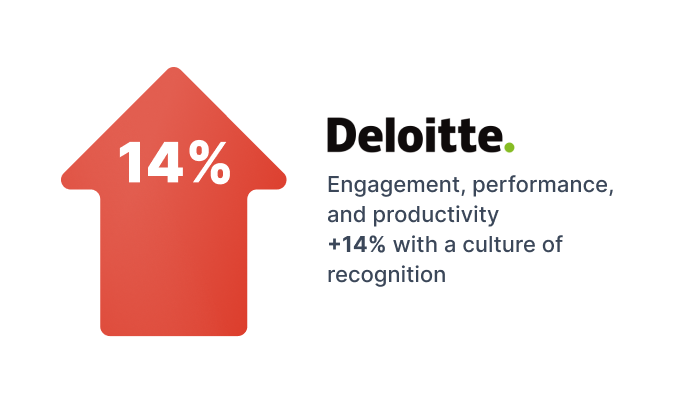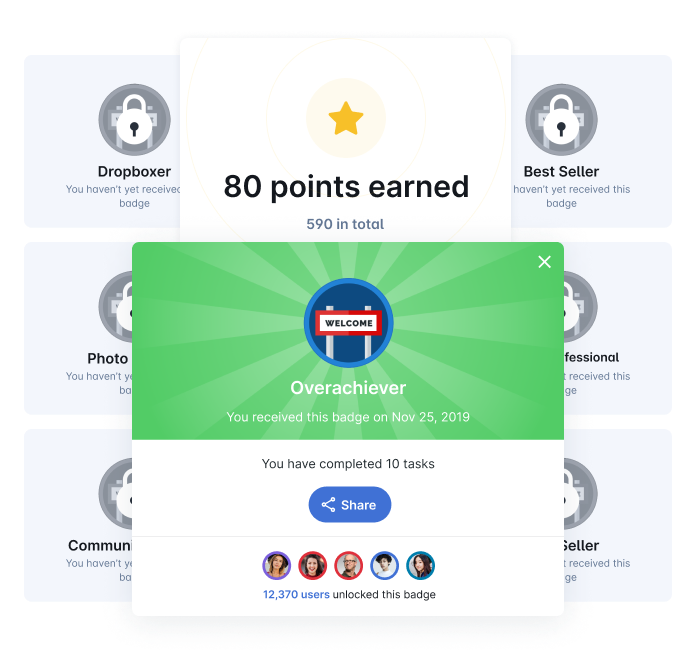What to Expect From Opportunity Management Software: How Sales and Workforce Learning Interact
What is Performance Enablement? A Complete Guide for 2023-24
Experts expect the economy to get worse before it gets better. Economists expect inflation to continue, resulting in higher prices and lower productivity. At the same time, industries like direct selling and retail experienced a downturn in 2022, with most major companies facing significant headwinds. This downturn partly explains why companies should ask: what is performance enablement and how do I utilize it? What is this new model for delivering technology? This isn’t basic enterprise workforce management software. No, such software has had its day, managing results after the fact. It’s something more powerful and compelling.
Today’s economic obstacles are potentially harsh. For industries with deskless workforces, it’s hard to directly manage teams. It’s a challenge to ensure that you’re capable of pushing back against the stagflation that might be around the corner, as well as the inflation that’s already present. Thus, it makes sense that companies would wish to use performance enablement technology to help unlock their workforce’s productivity and potential.
Below, we provide a guide to what performance enablement means and why it’s important in 2023 into 2024.
What Is Performance Enablement?
Performance enablement is a set of digital technologies, processes, and practices centered around maximizing workforce performance. Gains in performance flow down into workforce retention, productivity, and sales volume.
Performance Enablement – the 3 Keystones
Keystone 1: Learning Enablement
Over the past few years, as adoption of the digital transformation has sped up across verticals, “e-learning” has become a term of art for technologists and administrators alike. The COVID-19 pandemic highlighted the importance of digitized learning. As even non-deskless and distributed workforces were forced into a remote setting and automated, self-guided training rose in significance. When you can’t see your workforce face to face, it helps to have technology that can take care of onboarding, training, and overall learning enablement on an ongoing basis.
This is one prime aspect of any performance enablement technology – that it enables learning using the tools and technologies of what has been called the digital transformation. (The digital transformation refers to the set of digital processes that add capability, automation, and power to business operations and administration.)
Transforming Enterprise Workforce Management Software
Essentially, your deskless workforce will have access to key learning materials, whether that’s on the web or on their mobile devices. Even better, smart technology will be able able to prompt them on the right learning materials to review for their individual needs at this specific moment in time. Whether that’s a training video, a quiz on product knowledge, or some other kind of learning item, the performance enablement technology your workforce is using should cue up the material for them.
Again, this isn’t like the enterprise workforce management software you might be used to. Why? Because performance enablement, when done the right way, is going to help upskill workforce members based on their past performance data. It’s not a one-size-fits-all software where separate functions are siloed off. Instead, learning tools connect with incentives; incentives connect with opportunity management. All of these tools combine to form a single user experience that’s tailored to this individual.
Plus, this individual’s recommended upskilling/learning actions will be tied to corporate KPIs. That’s right. Performance enablement platforms like Rallyware can actually modify user journey based on the KPIs you need to emphasize at the moment. It’s a smart system. It’s actively transforming. It’s changing based on input from other systems. And the platform is going to notify the user, smartly, of what upskilling action they should take next. This is true learning & development, connected to performance metrics.
Here’s an example of notifications based on Rallyware:

This core function in performance enablement ensures that folks have the materials they need at the moment they need them, helping to modify their behaviors in a positive fashion. The closer in time the learning experience is to the reason for it, the likelier an individual is to internalize the object of learning.
It’s learning and upskilling that’s intuitively blended with a gradual growth in performance. As an individual becomes ready for learning material, the platform makes it available to them. And not only learning content but other content too, as we’ll see.
So with performance enablement, you’re going well beyond enterprise workforce management software. You’re not just saying “do this because the company says so.” It’s more: “do this to improve your results, your performance.
Keystone 2: Incentives and Recognition
Everyone needs recognition – rewards, fulfillment, and a sense of progress. In their research, Deloitte found that engagement, productivity, and performance are 14% higher in organizations with a culture of recognition. It stands to reason that the percentage can be even higher the more the workforce’s engagement, productivity, and performance rise.

Digital transformation can help. Particularly at a time when many people might be distracted by current events and the changes of a post-pandemic world, it’s critical to try every method you can to increase engagement. This is especially true for gig-based companies, who offer platforms for self-directed and freelance labor.
Consolidating Tools in One Platform
In a certain sense, incentives and recognition are tied into the learning enablement tools we discussed above. After all, as the building block for performance enablement, e-learning incentivizes people to complete onboarding and training tasks. It communicates, “This task is crucial for your growth.” In a still broader sense, incentive and recognition tools enable performance by helping people reach their individual goals.
Each member of the workforce has their own set of goals. For gig workers or contractors, might be to sell a product full-time and make a living this way; or it might just be to show exciting nutritional or fitness products to their friends. The key here is to incentivize the individual to make progress toward that goal.
That can mean using leaderboards to drive friendly competition; badges to visualize achievements; or team-based messaging to encourage the individual to make that crucial last step toward completing their goal for the week.
Here’s an example of an I&R win for a Ralllyware user:

The point is that all of this can be set up and automated using performance enablement technology that is truly “smart.” For instance, you might use your technology to set up smart notifications that automatically encourage the individual when they’re closing in on their short-term, self-defined goal. You just have to make sure you’re using the right technology. Therein lies the rub.
The right technology will allow you to consolidate tools, to bring together multiple functions in a single experience. That means that learning/upskilling tools exist alongside, and in connection with, I&R tools. They inform each other. The results of one transform the recommends from the other. That single stream of data flow optimizes results, while creating efficiencies.
Breaking down siloes isn’t only about creating efficiency, though. It’s about making actions as personalized as possible. That way the effect of each one is as impactful as it can be. As informed by past performance, and future goals, as can be. This is another way in which performance enablement is different from enterprise workforce management software.
Keystone 3: Opportunity Management
It’s important as well for the field workforce to be able to track prospects, nurture leads, automate outbound communication, and other customer management activities. Having such technology fully integrated into your performance enablement platform can make each field workforce member into his or her own remote sales powerhouse. For someone in the field, it’s like having your own personal sales platform for your own business in the palm of your hand.
Opportunity management tools can increase performance in the sales function, where learning enablement boosts performance in the upskilling/training function. Like the rest of your performance enablement platform, opportunity management should ideally sit in between front-office and back-office software.
Reflecting Company KPIs
These tools should get live data-feeds from other systems to maximize opportunities at the point of outreach. In other words, as with Rallyware, Opp Man tools should modify the user’s customer-relations journey based on what the corporate KPIs look like in real time. That’s part of what being a smart platform is. The platform changes the user journey based on where the company is falling short, or what product needs to be moved.
They should help the individual assemble pipelines and then show them when to act on those pipelines. In such a way, opportunity management tools can work together with learning enablement and incentives and recognition tools to create optimal results.
Again, you’re breaking down siloes. Data from one tool informs the other tools. Everything runs downstream and upstream. Every interaction, every action. The experience gets extremely personalized based on user goals. And company KPIs. From initial onboarding to 1 year in the workforce and beyond.

The end goal should be all of these aspects of the platform working together to drive performance for a high ROI, and a reduction in costs. For instance, training costs and the costs of manually implementing incentive programs.
For companies who want to up their margins at a time of retrenchment, this is the way to go about it. Stagnant inflation doesn’t have to rule your fate if you look around at what the digital transformation has to offer and make the right choice.
What Is the Difference Between Performance Enablement and Performance Management?
This is an important distinction to make before we set out our conclusions. It corresponds to another difference we’ve talked about. That is the difference between:
*Performance enablement platforms
*Enterprise workforce management software
Performance management is an older, more hierarchical approach to ensuring approach, using individual managers and oversight to squeeze productivity and sales gains out of the workforce. Performance enablement is organic and self-motivated, using technology to enable higher performance for a more distributed workforce. The performance gains come from within, driven by technology, rather than from above, driven by management.
The 3 Pillars of Performance Enablement Results
As a conclusion to our guide for 2022-2023, let’s discuss the three types of results you should be looking at in performance enablement. These are KPIs that your performance enablement platform should be hitting.
- Workforce Engagement: You have to keep folks engaged if they want performance to rise. Right now, many are juggling too much, from childcare to rising prices. How do you break through the noise? How do you keep the individual returning to the point of productivity? As Gallup finds, “the behaviors of highly engaged business units result in 21% greater profitability.” Gallup also connects engagement to productivity and retention. They conclude that high-turnover businesses achieve 24% less turnover with high employee engagement. Very engaged business units, they say, achieve a 17% increase in productivity.
- Workforce Retention: For companies that want consistent, measurable growth and success, you have to retain your workforce. Clearly, this is bound up with engagement – less engaged employees tend to drop out of the field. The bottom line: if you’re onboarding folks who drop out quickly, you’re wasting time and resources. At best, the majority of your field should be committed to the company and continuously upskilling. You want people who know, like, and evolve along with your products.
- Workforce Productivity: The US Bureau of Labor Statistics defines productivity as “a measure of economic performance that compares the amount of goods and services produced…with the amount of inputs used to produce those goods and services.” It measures the difference between how much something cost to make and how much producing it netted. Now, it won’t surprise anyone to learn that productivity is so important. It’s just logical – if you increase productivity, profits should rise across the board. That goes for the field workforce as well as corporate; everyone wins when productivity goes up.
These are the three pillars of performance enablement. If your technology optimizes for all three, you’ll be in good shape for the coming year and beyond.
Rallyware furnishes an end-to-end performance enablement platform for +47% workforce engagement, +43% workforce retention, and +32% workforce productivity. Click here to request your demo today.
News and Insights on Workforce Training & Engagement
We’re among top-notch eLearning and business engagement platforms recognized for effective training and talent development, helping to empower distributed workforces
Subscribe
